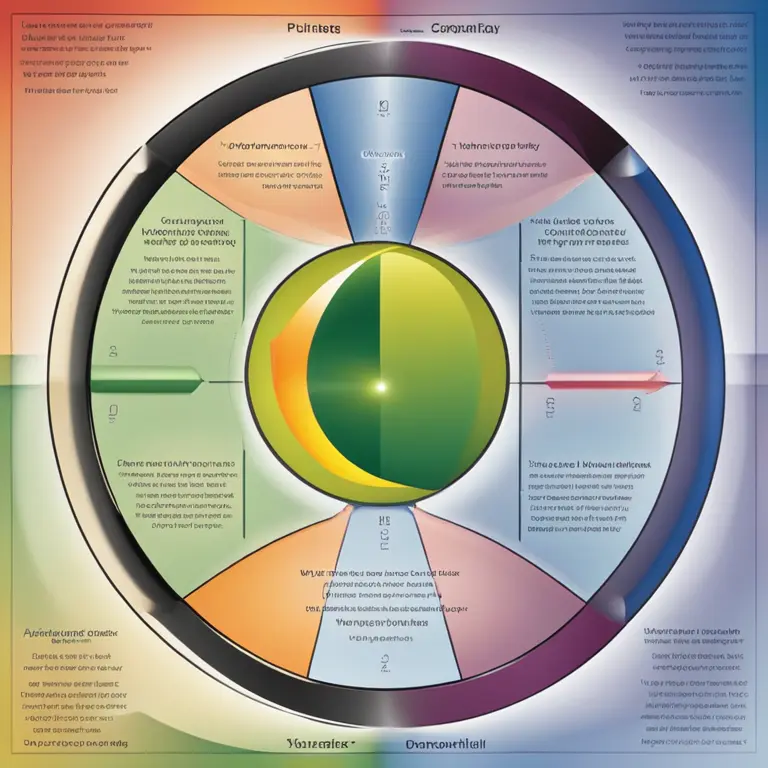
The Rhythms Within: An Introduction to Biorhythm Cycles
Learn about the intriguing concept of biorhythm cycles and how they may influence your daily life in physiological, emotional, and intellectual domains.
article by Adrian Wallace
What Are Biorhythm Cycles?
Modern life is increasingly aligned with the concept of patterns and cycles, and one fascinating perspective within this domain is that of biorhythms. Biorhythm cycles, a field of study that sits at the intersection of biology and chronobiology, purports that our lives are influenced by rhythmic biological cycles. Historically starting from the 19th century, this theory has seen various degrees of interest, with the premise that three fundamental cycles – physical, emotional, and intellectual – ebb and flow from the day we are born. These cycles are thought to predict various aspects of a person's life, potentially offering insights into the best timing for making decisions, engaging in activities, or understanding personal interactions.

The Three Primary Cycles
According to biorhythm theory, the physical cycle, with a 23-day span, influences our strength, health, and raw physical energy. The emotional cycle, lasting 28 days, like the moon's rotation around Earth, relates to our feelings, mood, creativity, and perception of the world around us. The intellectual cycle, taking 33 days to complete one round, ostensibly impacts our analytical thinking, decision-making, and logical reasoning. Each cycle is thought to oscillate between high, low, and critical periods, during which one's abilities in each of these domains can vary significantly. While scientific support for these claims is limited, the notion of living in harmony with our intrinsic cycles continues to appeal to many.

The Cycles' Impacts and Uses
Practitioners of biorhythms propose that by monitoring these cycles, individuals can gain valuable insights into their day-to-day states and optimize activities accordingly. For instance, it is recommended to undertake new projects or physically demanding tasks during high phases of the physical and intellectual cycles. In contrast, periods of emotional lows might suggest a need for self-care and avoiding emotionally charged decisions. While these theories lack robust empirical evidence, they serve as a guide for some, much like astrology or horoscopes, suggesting when one might 'play to their strengths' or proceed with caution.

Biorhythms in Modern Context
Today, with the advent of personalized health tracking and the Quantified Self movement, biorhythms have found a new resonance. There are now apps and software programmes that aim to track and predict one's biorhythm cycles, claiming to offer a data-driven approach to personal rhythm tracking. While still viewed with skepticism by the mainstream scientific community, the digital age has renewed interest in biorhythms as part of a broader surge in self-optimization tools. Whether as a curiosity or a genuinely useful gauge of one's physiological and psychological ebbs and flows, biorhythms are now more accessible for personal exploration than ever before.
Critical and Supportive Perspectives
As with any practice residing on the fringe of science, biorhythm theory has both advocates and detractors. Critics point to a lack of scientific evidence, asserting that any correlations between cycles and personal outcomes are likely coincidental. Supporters, however, argue for an anecdotal validity that, in their view, warrants consideration. While biorhythms might not hold up to the scientific method's rigors, they remain a point of interest for individuals seeking to understand and maximize their innate potentials.
Conclusion: Personal Exploration of Rhythms
In the evolving landscape of personal health and wellness, biorhythm cycles stand as a testament to humanity's longstanding desire to find patterns in life. Whether you view them as a scientifically questionable yet intriguing portion of pseudoscience or as a potentially handy framework for personal insight, understanding the basic concepts of biorhythm theory can be an enriching endeavor. For those looking to tap into the alleged rhythms governing their lives, there is ample space for exploration and application in today's technologically facilitated world.
Published: 1/30/2024
Modified: 1/30/2024
More predictions
Come back here soon to learn more about yourself and your future


Biorhythms Chart: Your Personal Physiological Patterns
Your guide to biorhythms chart – understand your natural cycles for better life decisions and well-being.


The Basis of Biorhythms: Patterns of Life's Natural Cycles
Delve into the foundation of biorhythms and understand how these rhythmic cycles are believed to influence our physical, emotional, and intellectual states.


The Essential Guide to Biorhythms Calculators
Discover how biorhythms calculators can provide insights into your physical, emotional, and intellectual cycles, optimizing your daily life for success and well-being.